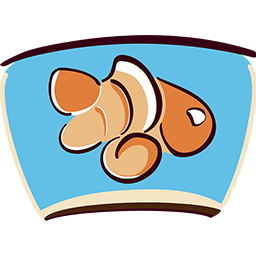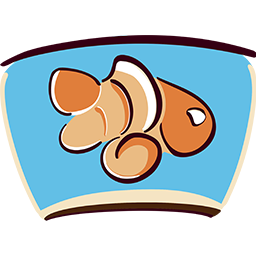Brine Shrimp
When it comes to raising baby fish, commonly called fry, brine shrimp are one of the best and easiest live foods that an aquarium owner can hatch on their own. This nutrient-dense food maximizes the survival rate of fry when the brine shrimp are fed a balanced diet, and can also be fed to adults in order to get them ready to breed due to the high protein content.
Requirements for Hatchery
You can either purchase an already-made hatchery online, or you can create your own hatchery using a large clear plastic container that has a lid with cut-out holes for the air tubing and enough room to fit in a thermometer. Many will either use a 0.5-gallon tank that has all of these elements added in and can be found cheap at local fish stores or online retailers. Once you have your container/tank ready to go, you will also need the following below;
- Brine Shrimp Eggs
- Air Pump (with adjustable value and check valve)
- Airline Tubing
- Adjustable LED light or small lamp
- Aquarium salt or marine salt
- Heater (optional, if the water gets too cold)
- Thermometer
Once you have all of the required items, you will want to make sure that we set up the tank/container correctly.
- Place your tank/container near a power strip, and make sure to connect your air pump and its tubing correctly (with the check value and adjustable valve if it's not on the unit itself). Place the airline tubing to the bottom of the tank/container and make sure that it can stay in place (there is no need to have any airstone or bubbler since the rough bubbles will help move the water and shrimp without causing too much of a constant flow). Make sure that it is bubbling but not causing bubbles to pop on the lid of the tank/container - if this is the case, make sure to reduce the flow and place it within the center of the tank/container.
- Fill up the tank/container with water, making sure not to fill it to the top and leave it a few inches from the top of the tank/container. There is no requirement in order to dechlorinate the water like with fish, such that chlorine will help dissolve the shells of the egg to help them hatch.
- If you have a heater, let it sit within the tank/container for 30 minutes before plugging in, and make sure to have the temperature set between 74-82°F (23-28°C). If you do not have a heater, make sure to heat the water by either heating the entire room or shining a small lamp with an incandescent or halogen bulb that generates heat.
- Add in the marine or aquarium salt, making sure that you add 1 tablespoon of salt per each liter of water. Do not use table salt as this contains other elements that will kill the brine shrimp and/or cause them not to hatch at all.
- Add up to 1 tablespoon of brine shrimp eggs per each liter of water that the tank/container holds. To help with increased longevity if you ordered a lot of eggs, store the rest of the eggs in the refrigerator (or in the freezer if you don’t plan on hatching the rest of them in the near future).
- Add in the thermometer if you haven't already done so, and make sure that the water temperature stays within 74-82°F (23-28°C).
Harvesting Brine Shrimp
After 18 to 36 hours, you should be able to see movement from some of the brine shrimp within the tank/container. If you don’t see any moving, pink particles in the water (if you turn off the air pump and wait a few minutes), then something with the setup is incorrect and you should make sure that the directions were followed above with the right equipment. It could be that the temperature is too cold or too hot, the brine shrimp eggs are too old from the supplier, or the salinity is not right for the tank/container. Once you figure out the issue, rinse out the hatchery and start over again.
- Now that the brine shrimp have hatched, it's time to make sure that we separate the free-swimming baby brine shrimp and those that have not hatched. Turn off the air pump and heater, and then shine a light at the bottom of the tank/container so that the brine shrimp swim toward the bottom while the eggs float toward the top.
- After 10 minutes, take a small fishing net or paper towel and soak the top of the water surface in order to collect the unhatched eggs that will be floating at the top.
- Now, shine the light at the top of the water to make the brine shrimp swim to the top/near the surface.
- After 10 minutes, take a pipette, no-drip turkey baster, or a small cup to collect the brine shrimp that are near the surface of the water. Some people like to filter out the brine shrimp using a brine shrimp sieve to remove the salt within the water that they are swimming in, however, in our experience, a little bit of salt added to the aquarium doesn’t affect the salinity.
- After feeding all of the brine shrimp that have hatched, thoroughly rinse the container/tank and the lid after every hatching because rotting eggs and bacterial buildup will pollute the water. Wash out all the old eggs and salt deposits with hot water, and now your setup is ready to hatch another batch of brine shrimp eggs.
As a general note, since brine shrimp cannot live in freshwater completely, they will die within a few hours. Due to that, the nutritional value of brine shrimp drops by the hour after hatching. You should therefore feed them to your fish right away, or place them in another tank/container specifically in order to grow them where you can fatten them up on nutritious food, thus restoring and increasing their nutritional value.

